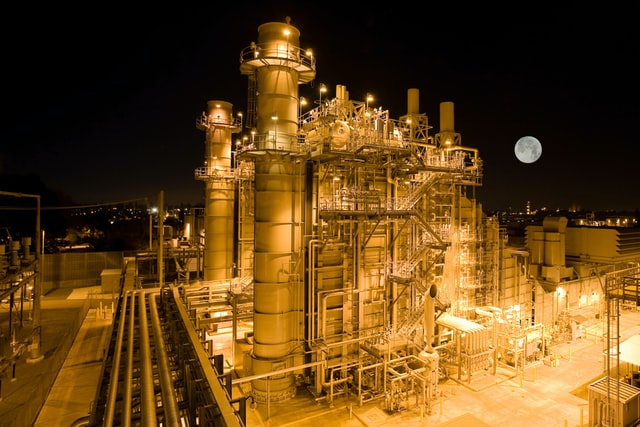Go Short On Natural Gas Using ETP’s
The financial markets are forward-looking as ever. Just look at how, during the summer of 2020, the major stock-market indexes priced in the discovery of COVID-19 vaccines and an economic recovery long before they actually happened (if they’ve even happened yet, and that’s debatable).
The markets are now doing this with natural gas. Futures contracts recently went parabolic, hitting $6 – the same level reached in 2010 and 2014 before the priced crashed to $2 both times.

Photo by American Public Power Association on Unsplash
Contrarians should ignore the noise on financial message boards – where everybody and his uncle is “bullish on natty gas” all of a sudden – and focus on what would need to happen in order to justify the current natural gas price, not to mention higher prices.
The bullish thesis on natural gas today is propped up on two main pillars.
First, it's suggested that this winter won’t just be cold – it will be a veritable Ice Age. Goldman Sachs analysts, for example, posits that “Anything closer to [or colder than] a full standard-deviation [from] average would likely trigger a price spike,” while John Kilduff, partner with Again Capital, warns that “Any early-season cold weather outbreak will juice this thing.” Similar scare-mongering comes from Commodity Weather Group, which cautioned that Europe could experience “the coldest winter since 2012-13” and among the top 10 coldest in more than 40 years. Moreover, Valery Chow, the vice president of Wood Mackenzie, suggests that “An unusually cold winter in the Northern hemisphere will create the perfect storm for global gas prices.”
When finance experts start dabbling in meteorology, it’s time to tune out. Heck, even meteorologists can’t get it right in the short term: when it comes to weather in general, the accuracy rate for a 24-hour forecast is about 75%.
So, forget about trying to predict what’s going to happen several months out, not to mention a temperature move “a full standard deviation [from] average.”
Second, natural gas supplies are tight – this ties into the weather-related concerns. There’s some recency bias going on here: commodities investors are likely panic-buying natural gas futures contracts because Hurricane Ida recently forced nearly all of the Gulf of Mexico’s gas output offline. This doesn’t mean that extreme weather events will persist into 2021, though.
The primary region of concern, however, is Europe. Goldman Sachs analyst Samantha Dart recently observed that stockpiles in northwestern Europe have recently been about 24% below average.
Contrarian investors should acknowledge this while viewing it as already quite far below the average – meaning, already at an extreme level, and hence more likely to revert to the mean than get more extreme for very long.
Besides, the European natural gas supply shortage is already a known factor among commodities traders. It’s safe to say that the supply deficit, along with the potential for a record-settingly cold winter, was already baked into the pie when natural gas soared from $1.50 in the summer of 2020 to where it is today.
Plus, Russian President Vladimir Putin just made an offer to ease the European natural gas supply crisis, saying, "We can reach another record of deliveries of our energy resources to Europe, including gas."
Beyond all of that, the two most popular exchange-traded products that track natural gas, UNG and BOIL, have a tendency to collapse over time even if the spot natural gas price goes up.
That’s due to the effect of contango, in which these funds continually have to sell almost-expiring futures contracts and purchase further-out-in-time contracts.
When the further-out contracts are more expensive than the near-term ones, that’s a state of contango. One older estimate stated that 80% of all daily settlements of natural gas contacts have been in contango since April 1990.
So, even if natural gas futures are in backwardation (further-out futures being less expensive than near-term ones) at the moment, you can reasonably expect the normal state of contango to return in due time.
That’s why you can pick just about any time from covering three years or longer, and you’ll find that UNG and BOIL went down even if natural gas went up.
UNG isn’t leveraged, while BOIL is 2x leveraged. Therefore, BOIL has added decay (beyond the contango effect) due to a phenomenon known as beta slippage: the mathematical tendency of volatile leveraged assets to underperform their benchmarks.
Just please be sure to use very small position sizes compared to the amount of cash in your trading account if you choose to short-sell UNG and/or BOIL. Natural gas is commonly called the "widow maker" for a good reason: even if your short ETP position will likely work out in your favor eventually, the underlying commodity's spot price could continue to go up sharply for a while.
Disclosure: David Moadel is not a licensed or registered investment advisor, and has no position in any securities listed herein.




Recommended read, couldn't agree more.